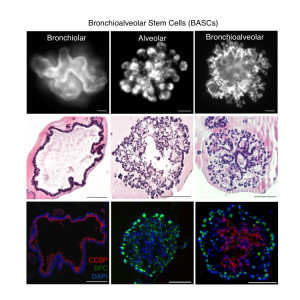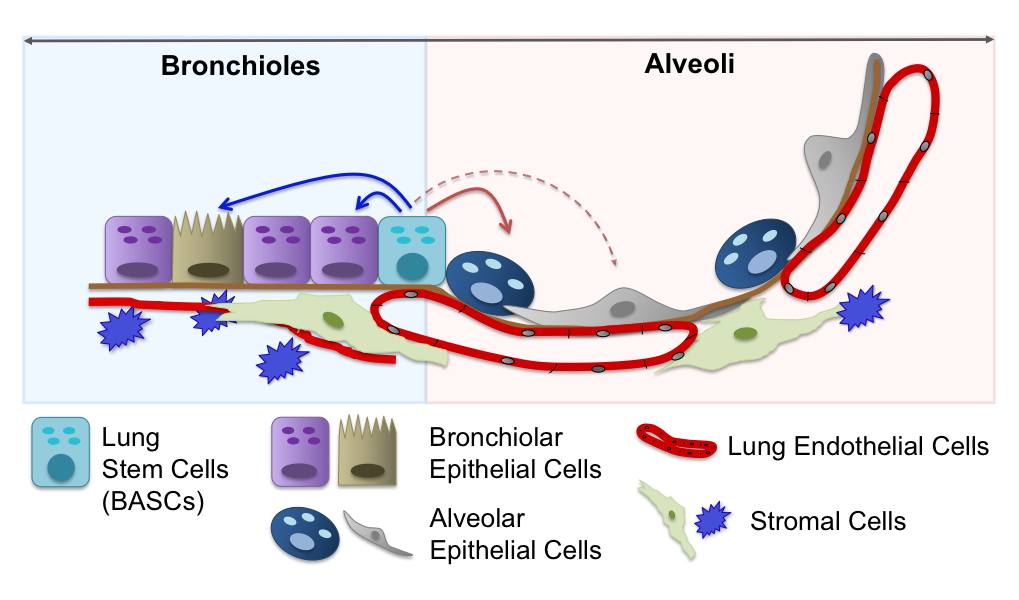
Using a novel 3-D culture method, scientists were able to prod lung (bronchioalveolar) stem cells to produce colonies with the cell type of choice: airway (bronchiolar) epithelial cells, alveolar epithelial cells or both. (Images: Joo-Hyeon Lee)
That’s the hope of researchers Carla Kim, PhD, and Joo-Hyeon Lee, PhD, of the Stem Cell Research Program at Boston Children’s Hospital. In the Jan. 30 issue of Cell, they describe a pathway in the lungs, activated by injury, that directs stem cells to transform into specific kinds of cells—and that can be manipulated to enhance different kinds of repair, at least in a mouse model.
By boosting the pathway, Kim, Lee and colleagues successfully increased production of alveolar epithelial cells, which line the lung’s alveoli—the tiny sacs where gas exchange takes place, and that are irreversibly damaged in diseases like pulmonary fibrosis and emphysema.
By inhibiting the same pathway, they ramped up production of airway epithelial cells, damaged in airway diseases like asthma and bronchiolitis obliterans.
The repair pathway has several key players, starting with lung stem cells (also known as bronchioalveolar stem cells). Nestling close to these cells and the nearby bronchiolar and alveolar epithelial cells are tiny blood capillaries (appearing below as red cavities). These vessels are lined with endothelial cells that produce different kinds of repair factors.
“When lung cells are injured, there seems to be a cross talk between the damaged cells, the lung endothelial cells and the stem cells,” explains Lee.
Lee and Kim are still trying to eavesdrop on this cross-talk, but one key factor produced by endothelial cells is a protein called thrombospondin (TSP-1). By adding it to 3-D cultures exposed to the air, mimicking the lung environment, Kim and Lee were able to prod even a single lung stem cell to start churning out alveolar cells. And by simply taking the TSP-1-rich liquid surrounding cultured endothelial cells and injecting it into the mice, they were able to reverse the lung damage caused by pulmonary fibrosis.
Conversely, when the researchers engineered lung endothelial cells to lack TSP-1 and added them to the 3-D cultures, the stem cells went down a different pathway, producing more airway cells. And in live mice unable to make TSP-1, airway repair was enhanced after injury.
TSP-1 is clearly a potential target for manipulation in patients with lung disease, but it’s not the only one, says Kim. “We think that lung endothelial cells produce a lot of repair factors besides TSP-1,” she says. “We want to find all these molecules, which could provide additional therapeutic targets.”







